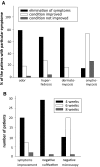The Oomycete Pythium oligandrum Can Suppress and Kill the Causative Agents of Dermatophytoses
- PMID: 29967972
- PMCID: PMC6156753
- DOI: 10.1007/s11046-018-0277-2
The Oomycete Pythium oligandrum Can Suppress and Kill the Causative Agents of Dermatophytoses
Abstract
Pythium oligandrum (Oomycota) is known for its strong mycoparasitism against more than 50 fungal and oomycete species. However, the ability of this oomycete to suppress and kill the causal agents of dermatophytoses is yet to be studied. We provide a complex study of the interactions between P. oligandrum and dermatophytes representing all species dominating in the developed countries. We assessed its biocidal potential by performing growth tests, on both solid and liquid cultivation media and by conducting a pilot clinical study. In addition, we studied the molecular background of mycoparasitism using expression profiles of genes responsible for the attack on the side of P. oligandrum and the stress response on the side of Microsporum canis. We showed that dermatophytes are efficiently suppressed or killed by P. oligandrum in the artificial conditions of cultivations media between 48 and 72 h after first contact. Significant intra- and interspecies variability was noted. Of the 69 patients included in the acute regimen study, symptoms were completely eliminated in 79% of the patients suffering from foot odour, hyperhidrosis disappeared in 67% of cases, clinical signs of dermatomycoses could no longer be observed in 83% of patients, and 15% of persons were relieved of symptoms of onychomycosis. Our investigations provide clear evidence that the oomycete is able to recognize and kill dermatophytes using recognition mechanisms that resemble those described in oomycetes attacking fungi infecting plants, albeit with some notable differences.
Keywords: Aggressivity genes; Dermatophytes; Microsporum; Mycoparasitism; Pythium oligandrum; Trichophyton.
Conflict of interest statement
Conflict of interest
Martin Suchánek and Radim Klimeš are owners and stakeholders in the companies Biopreparáty and Bio Agens Research and Development manufacturing biological antifungal products based on
Research Involving Human Participants and/or Animals
For this type of study formal consent is not required.
Informed Consent
Informed consent was obtained from all individual participants included in the study.
Figures






Similar articles
-
Antifungal effects of the biological agent Pythium oligandrum observed in vitro.J Feline Med Surg. 2017 Aug;19(8):817-823. doi: 10.1177/1098612X16658690. Epub 2016 Jul 1. J Feline Med Surg. 2017. PMID: 27418287 Free PMC article.
-
Parasitic relationships between Pythium oligandrum Drechsler and some other species of the Oomycetes class.Zentralbl Bakteriol Naturwiss. 1978;133(4):341-9. doi: 10.1016/s0323-6056(78)80051-2. Zentralbl Bakteriol Naturwiss. 1978. PMID: 726706
-
Influence of Pythium oligandrum biocontrol on fungal and oomycete population dynamics in the rhizosphere.Appl Environ Microbiol. 2009 Jul;75(14):4790-800. doi: 10.1128/AEM.02643-08. Epub 2009 May 15. Appl Environ Microbiol. 2009. PMID: 19447961 Free PMC article.
-
Pythium oligandrum: an example of opportunistic success.Microbiology (Reading). 2012 Nov;158(Pt 11):2679-2694. doi: 10.1099/mic.0.061457-0. Epub 2012 Sep 13. Microbiology (Reading). 2012. PMID: 22977087 Review.
-
Biological control of plant pathogens: advantages and limitations seen through the case study of Pythium oligandrum.Environ Sci Pollut Res Int. 2014 Apr;21(7):4847-60. doi: 10.1007/s11356-013-1807-6. Epub 2013 May 22. Environ Sci Pollut Res Int. 2014. PMID: 23695856 Review.
Cited by
-
Comparative analyses of saprotrophy in Salisapilia sapeloensis and diverse plant pathogenic oomycetes reveal lifestyle-specific gene expression.FEMS Microbiol Ecol. 2020 Oct 24;96(11):fiaa184. doi: 10.1093/femsec/fiaa184. FEMS Microbiol Ecol. 2020. PMID: 32918444 Free PMC article.
-
Novel Insights into the Effect of Pythium Strains on Rapeseed Metabolism.Microorganisms. 2020 Sep 25;8(10):1472. doi: 10.3390/microorganisms8101472. Microorganisms. 2020. PMID: 32992822 Free PMC article.
-
Biological Control of a Root-Knot Nematode Meloidogyne incognita Infection of Tomato (Solanum lycopersicum L.) by the Oomycete Biocontrol Agent Pythium oligandrum.J Fungi (Basel). 2024 Apr 2;10(4):265. doi: 10.3390/jof10040265. J Fungi (Basel). 2024. PMID: 38667936 Free PMC article.
-
Comparative eco-physiology revealed extensive enzymatic curtailment, lipases production and strong conidial resilience of the bat pathogenic fungus Pseudogymnoascus destructans.Sci Rep. 2020 Oct 5;10(1):16530. doi: 10.1038/s41598-020-73619-7. Sci Rep. 2020. PMID: 33020524 Free PMC article.
-
An Outbreak of Trichophyton quinckeanum Zoonotic Infections in the Czech Republic Transmitted from Cats and Dogs.J Fungi (Basel). 2021 Aug 25;7(9):684. doi: 10.3390/jof7090684. J Fungi (Basel). 2021. PMID: 34575722 Free PMC article.
References
-
- Drake LA, Dinehart SM, Farmer ER, Goltz RW, Graham GF, Hordinsky MK, et al. Guidelines of care for superficial mycotic infections of the skin: tinea corporis, tinea cruris, tinea faciei, tinea manuum, and tinea pedis. J Am Acad Dermatol. 1996;34:282–286. doi: 10.1016/S0190-9622(96)80135-6. - DOI - PubMed
MeSH terms
Grants and funding
LinkOut - more resources
Full Text Sources
Other Literature Sources
Medical
